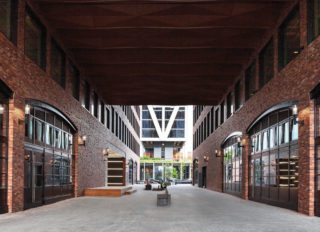For most people, stress is inevitable, particularly workplace-generated stress. In America, 83% of professionals report being stressed at work and every day, and up to one million employees miss work because of stress, according to a 2013 study by Everest College. The Health Advocate Inc., a consumer-oriented healthcare information service, found that this translates to a jaw-dropping
$300 billion loss in productivity each year. Even though there are endless career paths, each with their own set of challenges, the causes of workplace stress are consistent across most sectors. Recent surveys from Harvard Business Review and Gallup, among others, show the three main causes: impossible deadlines, heavy workloads, and lack of professional development.
Overall, employees are working harder for what they understand to be less reward, causing tension and anxiety between staff members and leading to decreased productivity and increased illness. A recent study by economic researchers at the University of Warwick in Conventry, England, discovered that happiness does in fact translate to increased productivity: happy workers were 12% more productive, while unhappy workers were 10% less productive. Although we understand workplace stress will never go away entirely, we can do our best as employers and designers to prevent undue stress from monopolizing our energy and focus. Smart employers are looking towards change management techniques that can improve morale and increase productivity, such as allowing flexible hours, permitting mental health days, and addressing employee fatigue. Once these fundamental changes are underway, the next step is to make physical changes to the actual workplace to help create a more positive and relaxing environment.
While office design itself is not always an inherent stress generator, it can either stall or propel the culture change set forth. Today there are endless materials and products that can be used to organize the workspace or make it more attractive. But how can designers create office spaces that not only look good, but also alleviate stress and promote productivity?
Materials that connect workers to nature is one proven strategy. Studies have shown that daylight, artwork, and views to the outdoors or access to nature itself help decrease stress and increase productivity, resulting in a more positive work environment. The best office design allows natural light to penetrate as far into the building as possible and takes advantage of natural materials.
Think about how you felt in a doctor’s office designed in the early 1990s; now envision yourself lounging on a beach or relaxing by a fireplace in a log cabin. Natural products and light help make individuals feel relaxed, connected, and grounded, while artificial products like vinyl tile or white ceiling tiles cause anxiety and discomfort.
Sustainable, natural materials are best for designing almost any room, whether it be an office space, bedroom, or even a classroom. These can include wood, cradle-to-cradle metals, stone, non-synthetic carpets and fabrics, and glass. Humans are very perceptive to authenticity, and when a space is finished with a natural product, they respond in a positive way, such as having a more optimistic attitude or just feeling good in the space. Compare this experience to wearing a shirt made from 100% cotton vs. wearing a 60% cotton/40% polyester shirt: although both shirts may appear the same, they feel and look very different when worn.
Few individuals are able to work in a noisy office, so products that help reduce noise pollution can also help decrease work- related stress. Soft materials that absorb sound—like felt panels, upholstered seating, and natural rugs—are great for controlling noise while adding more visual interest to the space. Overall, when selecting these products, it is best to avoid synthetic products, particularly those that off-gas VOCs and other toxic chemicals. Our bodies are very in tune with the notion of being disconnected from nature, and exposure to VOCs causes a number of physical reactions, such as allergies and damage to the central nervous system.
Finally, clutter can kill almost anyone’s mood. We encourage our clients to take a moment to think critically about their personal workstation to determine what can be organized in more efficiently. To start, any old papers, folders, and office supplies that are used only once or twice a week can be relocated to a drawer or cabinet or stored digitally. Decluttering decreases distractions and makes it easier to complete tasks in a timely fashion. Once you have cleared your desk, add a small plant—it will give some color to your now empty desktop while offering a small escape into nature.
Amy Jarvis, AIA, is an associate at Spacesmith. Born and raised in Houston, Amy found her way to New York after graduate school to begin her career in architecture. She brings a background in fabrication and working with world-renowned artists to a wide range of projects at Spacesmith.













